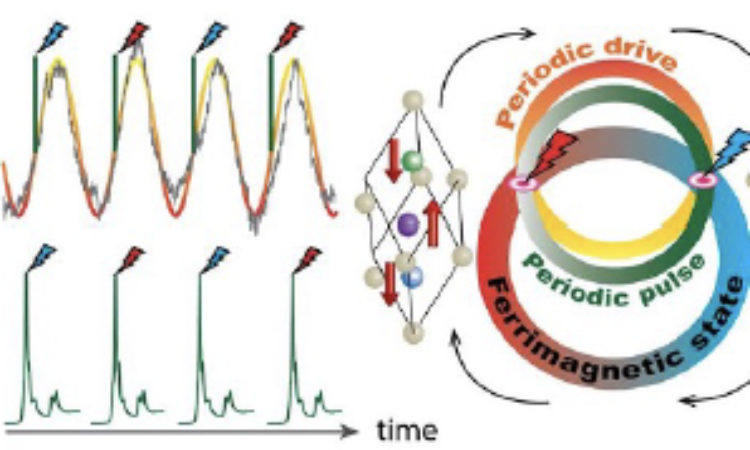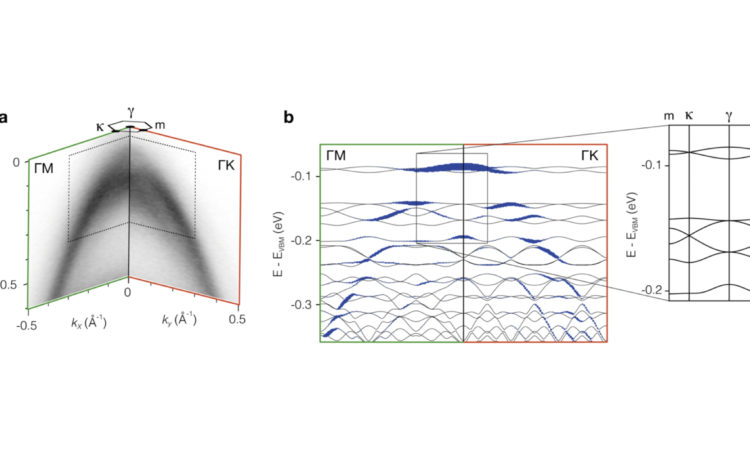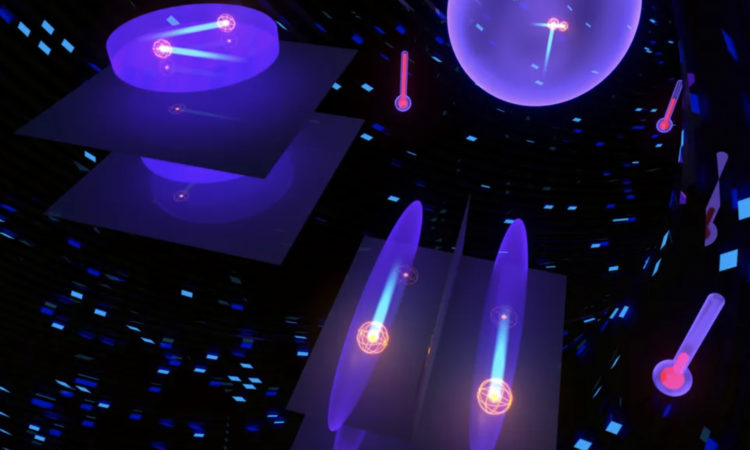High-Resolution Photoemission on Sr2RuO4 Reveals Correlation-Enhanced Effective Spin-Orbit Coupling and Dominantly Local Self-Energies

By Anna Tamai, University of Geneva
Based on article published in Physical Review X
Since the seminal work of Landau in the 1950’s, the low-temperature metallic state of materials is generally assumed to be well understood. Yet, when it comes to oxides, even good metals such as the strontium ruthenates continue to hold surprises. Landau introduced the concept of long-lived low energy excitations which can be described as ‘quasiparticles’ – collective entities which can be pictured as individual electrons dressed up by the interactions with other electrons. If these interactions are strong, quasiparticles move slower and their mass can increase to values far beyond the mass of a bare electron. While this mass enhancement is well documented in many metallic oxides and can be seen in simple specific heat experiments, its precise origin remains debated even in the most intensely studied materials.

A team jointly led by researchers from the University of Geneva and the Flatiron Institute in New York has re-examined the behavior of electronic quasiparticles in the famous oxide Fermi liquid Sr2RuO4. Combing laser-based high-precision electron spectroscopy with new theoretical analysis Tamai et al. determined the variation of the mass enhancement along the entire Fermi surface. This revealed a strong dependence on the direction of the quasiparticle momentum, which is often interpreted as a signature of non-local interactions that are strong at certain momenta and weak at others. However, introducing a new method to analyse this data, the authors show that the momentum dependence is only apparent if the problem is described in a band basis and disappears almost completely when electronic states are described in a basis of local orbitals.
This finding has deep consequences. It establishes that electronic orbitals associated with each atom in the crystal lattice continue to have direct physical relevance in an itinerant metal where electrons travel over thousands of atoms and behave as long-lived waves. It also implies that the high mass of electronic quasiparticles in this material arises predominantly from local electron-electron interactions, whereas collective oscillations of the lattice and the electron spin-density play only a secondary role. These observations provide one of the first direct quantitative tests of the locality ansatz of dynamical mean field theory, in which atomic orbitals and local interactions play a central role. The study of Tamai et al. also reveals how quasiparticles get gradually ‘undressed’ as their energies become larger, revealing a far richer energy dependence of this process than previously anticipated. These observations and analysis provide a basis for addressing a large class of other quantum materials, including for example iron-based superconductors.



